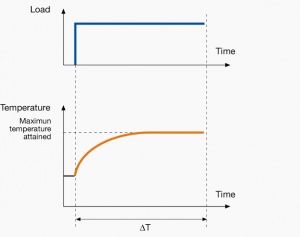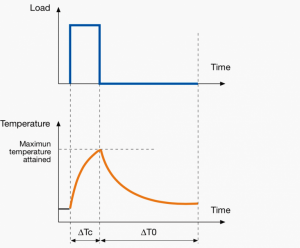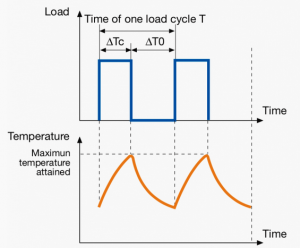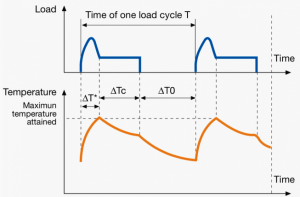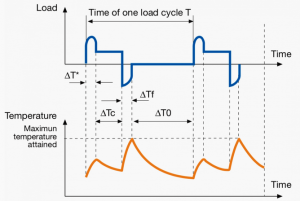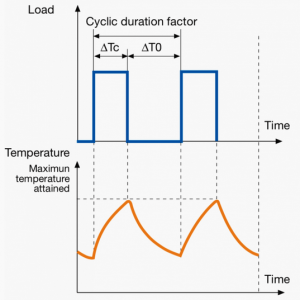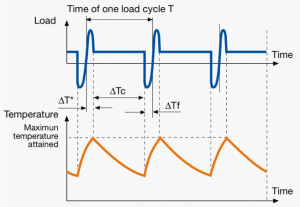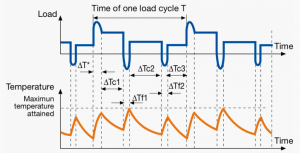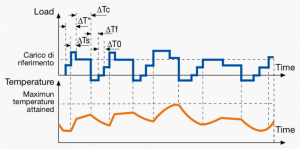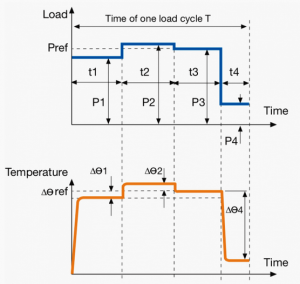Motor selection
The selection of motor includes the following steps (which are described in further detail on this page):
- Step 1) Prerequisite: select Drive Mechanism
- Step 2) Select motor type
- Step 3) Dimension the motor
Step 1) Prerequisites
The prerequisites that shall be met prior to motor selection are listed below:
Prerequisite 1) Select Driven Mechanism
Before selecting a motor, select the Drive mechanism which can perform the intended output motion when connected to and driven by the motor. See the following guide for a comparison between different drive mechanisms:
Prerequisite 2) Identify the available power supply
Identify the available Mains Electricity (also called Utility Power or Wall Power) for the intended location of the machine. Lists of Mains Electricity standards by country is readily available on the internet.
Most countries is typically around 100 or 200 Volts for residential voltage and around 400 for three-phase voltage.
Servo motors are available for these voltages: 100, 200 and 400 Volts.
Step 2) Select the motor type
In summary
- Servo motors are suitable for high speed and high acceleration requirements. The trade-off is a higher cost and complexity.
- Stepper motors are suitable for low speed and low acceleration requirements.
- DC motors are suitable for continuous rotation at high RPMs and constant torque across the motor’s speed range.
Step 2.1) Identify application and desired motor attributes
Use the table below to select one of four motor types that correspond to your application and the desired motor attributes.
| Attribute | Stepper motors | Servo motors | Brushed DC motors | Brushless DC motors |
|---|---|---|---|---|
| Area of use | Positioning by incremental steps. Low speed and low acceleration. | High speed and high acceleration. | Continuous rotation at high RPMs and constant torque across the motor’s speed range. | Continuous rotation at high RPMs and constant torque across the motor’s speed range. |
| Suitable applications |
• floppy disk drives • flatbed scanners • computer printers • plotters • slot machines • image scanners • compact disc drives • intelligent lighting • camera lenses • CNC machines and 3D printers • Textile machines • Printing presses • Medical imaging machinery • Small robotics • Welding equipment |
• Automated manufacturing • Robotics • CNC machinery • Telescopes • Elevators • Conveyor Belts • Camera Auto Focus • Solar Tracking System • Metal Cutting & Metal Forming Machines • Antenna Positioning • Printing Presses/Printers • Automatic Door Openers |
• Home appliances • toys • electrical propulsion • cranes • paper machines • steel rolling mills |
• Drones • Electric cars • Washing machines • Air Conditioners • Cordless tools • Computer • Fans • Disk drives |
| Accuracy | High | High (achieved by adding encoder to the system.) | None | Varies |
| Torque at low speeds | High | High | - | - |
| Torque at high speeds | Low (can lose up to 80% torque at high speeds) | High | - | - |
| Cost efficiency | High | Lower (uses rare-earth magnets, may need encoder or gearbox.) | High | Lower |
| Lifespan | Long life | Shorter | Shorter | - |
| Size | Compact | High output power relative to size and weight. | Compact | - |
| Load capacity | Low (might skip steps at high loads.) | High | - | - |
| Efficiency | Low (constantly draw maximum current independent of load.) | High (80–90% efficiency.) | High | - |
| Ease of use | • Easily controlled (can be controlled with micro controllers such as the ATmega chips that are readily available on Arduino development boards.) Can stall or lose position without a control loop. | • Higher maintenance if gearbox and encoder is included.
• Limited range of motion; positional rotation servos are limited to 180 degrees of motion. • Works in AC or DC drive. |
• Torque to Speed Ratio can be altered (exclusive to brushed motors.)
• High maintenance requirements due to easily worn out as a result of continuous moving contact. |
• Some brushless motors are difficult to control and require a specialized regulator.
• Low maintenance. |
Step 2.2) Confirm Load characteristic
Look at the Load characteristics type in the table below and identify which Load characteristic corresponds to your application. Then confirm that the motor type you selected from the table above corresponds to the identified Duty cycle.
| Load characteristic | Application examples |
|---|---|
| Torque that is constant | conveyors, extruders, bulk material conveyors, extruders, positive displacement pumps |
| Torque that changes abruptly | elevators, compactors, punch presses, saws, and batch conveyors |
| Torque that change gradually over time | centrifugal pumps, fans, blowers, compressors with unloaders |
Step 2.3) Confirm Duty cycle type
Look at the Duty cycle types in the table below and identify which Duty cycle corresponds to your application. Then confirm that the motor type you selected from the table above corresponds to the identified Duty cycle.
A duty cycle type specifies the sequence and time duration the motor operation including Starting, Running with no load, Running with a full load, Electric braking, and Rest. How the operations affect motor temperature determines whether increased cooling is needed or whether another motor is suitable.
In the table below, the term "Load" refers to the electrical current (measured in Ampere) that is supplied. This electrical load, or current, corresponds to the mechanical load, or torque, measured in Newton meter. More torque requires more current. The terms "Temperature equilibrium" or "Steady state temperature" simply mean temperature that remains constant.
Step 3) Dimension the motor
Once the motor type has been selected, the motor has to be "dimensioned" or "sized." This means that we need to select a motor that is of the right size and power.
An underdimensioned motor will not provide enough torque for the intended application to be performed or be under too much stress leading to a reduced lifespan for the motor. A motor that is overdimensioned will cost more than needed, increase energy usage and be inefficient.
The steps for dimensioning the motor will depend on the which motor type was selected in Step 2 of this article. Follow the link to the dimensioning guide correspodning to the selected motor type below:
- AC motor/Induction motor dimensioning
- DC motor dimensioning
- Servomotor dimensioning
- Stepper motor dimensioning
